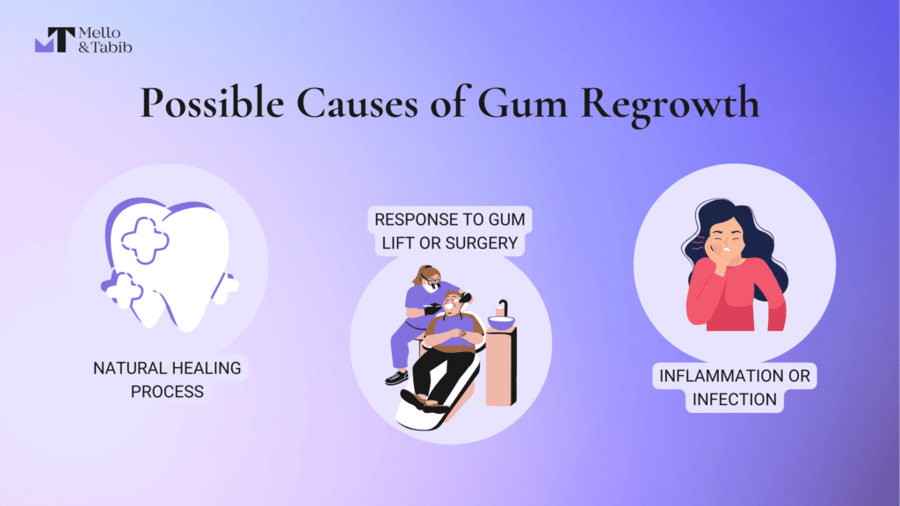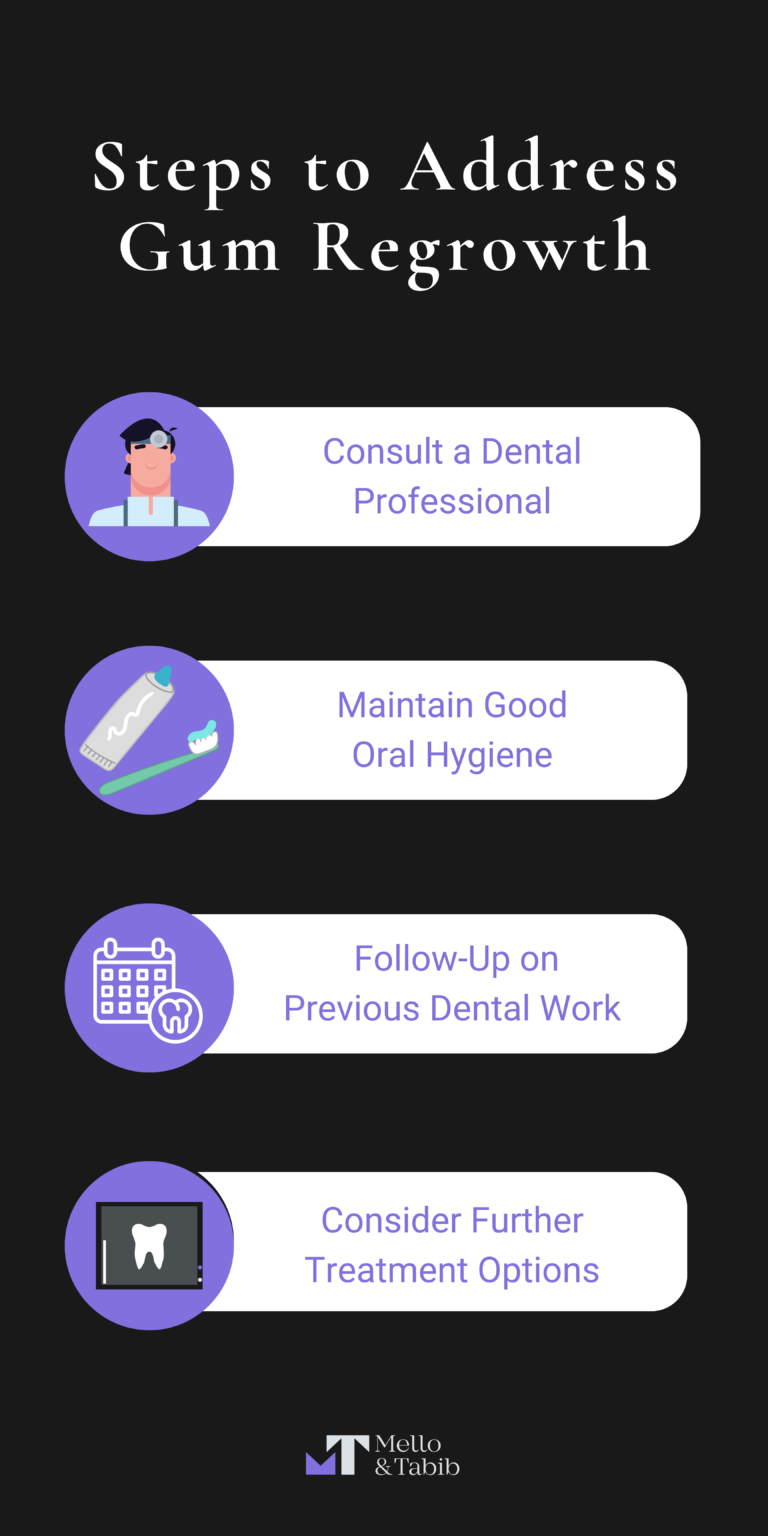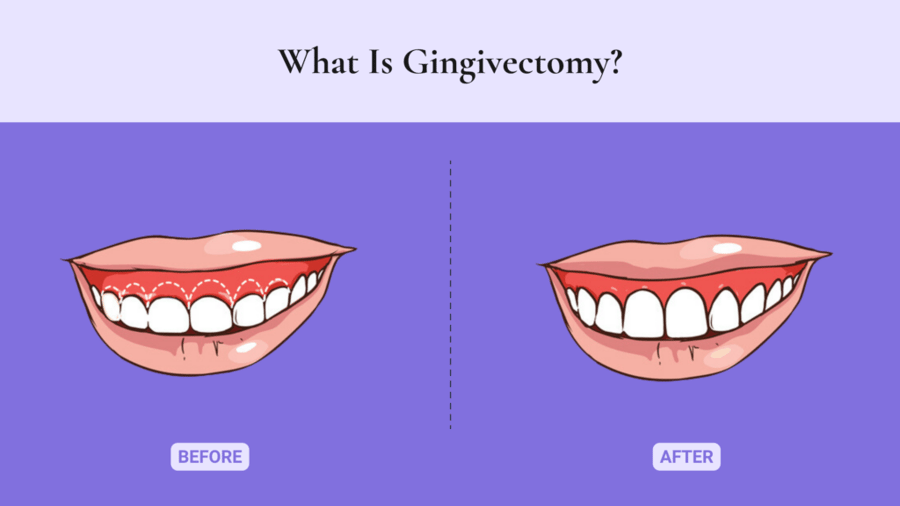I Have Gum Regrowth: What To Do
January 31st, 2024 | 3 min read

Noticing changes in your gum tissue, such as gum regrowth, can be surprising. Whether you’ve experienced it naturally or following a dental procedure like a gum lift, understanding what to do next is important.
At NYC Smile Design, we have encountered numerous cases of gum regrowth and understand the concerns and questions it can raise.
This article aims to educate readers about gum regrowth, drawing on our experience to discuss its possible causes and offer advice on how to effectively address this dental concern. With the right knowledge and care, managing gum regrowth can be a straightforward process, ensuring the continued health and beauty of your smile.
What is Gum Regrowth?
Gum regrowth is an intriguing and somewhat complex aspect of oral health, referring to the changes in the gum tissue that may give the appearance of growth or reshaping around the teeth. It’s important to understand that while the gums cannot regenerate in the same way as some other body tissues, they can undergo changes that might be perceived as regrowth. This phenomenon often occurs in response to various dental conditions or treatments.
Possible Causes of Gum Regrowth
To better understand and effectively manage gum regrowth, it’s crucial to explore its various potential causes. Factors such as the natural healing process, responses to procedures like gum lifts or surgery, and issues like inflammation or infection can all play a role.

Natural Healing Process
One of the most common reasons for gum tissue changes is the body’s natural healing process. This can be particularly noticeable in cases where there has been gum recession due to conditions like gingivitis or periodontitis. When the underlying cause of the recession is treated – for instance, through improved oral hygiene or specialized periodontal treatment – the gums can heal and readjust. This healing will help the gums become firmer and may give the appearance of the gums “growing back” to cover previously exposed areas of root surfaces.
Response to Gum Lift or Surgery
Gum regrowth is also commonly observed following surgical procedures like gum lifts or other periodontal surgeries. These procedures often involve reshaping or removing a part of the gum tissue to improve oral health or aesthetics. As the gums heal post-surgery, they may undergo changes in contour or positioning around the teeth. This is a normal part of the healing process and can sometimes give the impression of the gum tissue regrowing or expanding.
Inflammation or Infection
In some cases, apparent gum regrowth can be a response to inflammation or infection in the gum tissue. Conditions such as gingivitis or periodontal disease can cause the gums to become swollen and tender. This inflammation can make the gums appear larger or more pronounced, which might be mistaken for regrowth. It’s crucial to address the root cause of the inflammation or infection through appropriate dental care to prevent further oral health issues.
Steps to Address Gum Regrowth
- Consult a Dental Professional: The first step in addressing gum regrowth is to see a dentist or periodontist. They are equipped to perform a comprehensive evaluation of your gum health, determining whether the regrowth is a normal part of the healing process or indicative of an underlying dental issue. They might use various diagnostic tools, such as X-rays, to get a clearer picture of your gum and bone health.
- Maintain Good Oral Hygiene: Good oral hygiene is critical in managing gum health. Regular brushing with a soft-bristled toothbrush, using fluoride toothpaste, and daily flossing are essential to prevent plaque buildup, which can exacerbate gum issues. Additionally, professional dental cleanings are crucial as they help remove tartar, which can’t be eliminated through regular brushing at home.
- Follow-Up on Previous Dental Work: If your gum regrowth follows dental procedures like a gum lift, it’s important to strictly follow the post-operative care guidelines provided by your dentist. These might include specific instructions on how to clean the area, dietary recommendations, and any necessary medication. Also, attending scheduled follow-up appointments allows your dentist to monitor the healing and adjust the treatment plan as needed.
- Consider Further Treatment Options: Based on the cause and extent of the gum regrowth, your dentist may suggest various treatment options. Treatments like scaling and root planing might be recommended for a deeper clean below the gum line. In cases where there is excessive gum tissue, further surgical interventions might be necessary. Additionally, your dentist may recommend specialized care routines or products to better manage your condition.

By following these steps, you can effectively manage gum regrowth and maintain the health of your gums. It’s important to be proactive in your care and seek timely professional advice to prevent any complications and ensure the longevity of your dental health.
But What is a Gum Lift?
A gum lift, also known as gingivectomy, crown lengthening or gum contouring, is a cosmetic dental procedure designed to reshape and improve the appearance of your gums. This procedure is often sought by individuals who have a ‘gummy smile,’ where a significant portion of their gums is visible when they smile or those who have uneven gum lines that they wish to correct.

Conclusion: Proactive Steps for Gum Health
Experiencing gum regrowth can be a source of concern, but understanding its causes and knowing the appropriate steps to take can help you manage this issue effectively. Regular dental check-ups and maintaining good oral hygiene are key. If you notice changes in your gum tissue, don’t hesitate to seek professional advice. Early intervention can be crucial in ensuring your gums stay healthy and your smile remains beautiful.
Remember, at NYC Smile Design, we’re committed to providing comprehensive care for all your dental needs. If you’re dealing with gum regrowth or have any concerns about your gum health, our team is here to help you with expert advice and effective treatment options. Are you considering a gum lift or curious about other periodontal procedures? We invite you to schedule a consultation with us to explore your options and find the best solution for your needs. Additionally, for a deeper understanding of specific treatments like gingivectomy, check out our blog “What is a Gingivectomy?” to learn more about this procedure and how it might benefit you.
Topics:

